By encapsulating small cesium (CS) atoms in a glass cylinder that looks like a copper "headset", scientists at the National Institute of standards and Technology (NIST) were able to increase the sensitivity of atomic RF receivers by two orders of magnitude** It is reported that the receiver is composed of cesium atomic gas which is located inside the glass container and prepared in a special state.
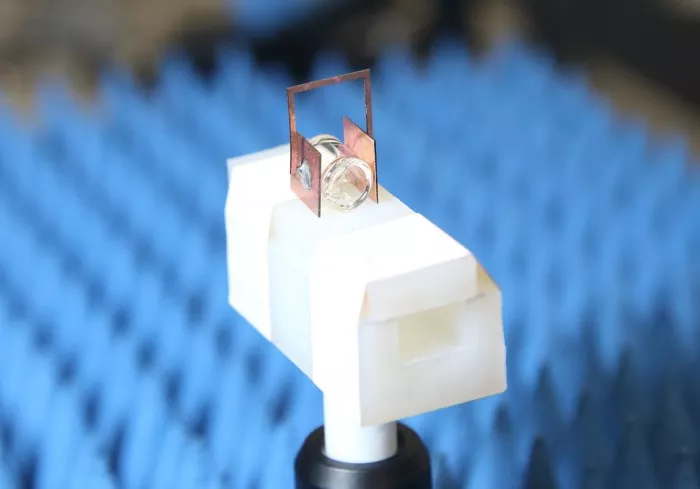
When the antenna above the device sends a radio signal, the earphone will increase the received signal strength by a hundredfold. (from: NIST)
Published in [applied physics letters] on May 20, 2022( https://aip.scitation.org/doi/10.1063/5.0088532 ) ) In an article in the journal, NIST scientists explained its principle and effect in detail.
Experiments show that when the signal is applied to the gaseous atoms in the "vapor cell", this unique structure (two square panels + overhead circuit) can enhance the incoming radio signal or electric field.
Chris Holloway, the project leader, explained: technically speaking, the "headset" structure belongs to an open-loop resonator. Its function is similar to "metamaterials" with novel structural design, and has different characteristics from ordinary ones.
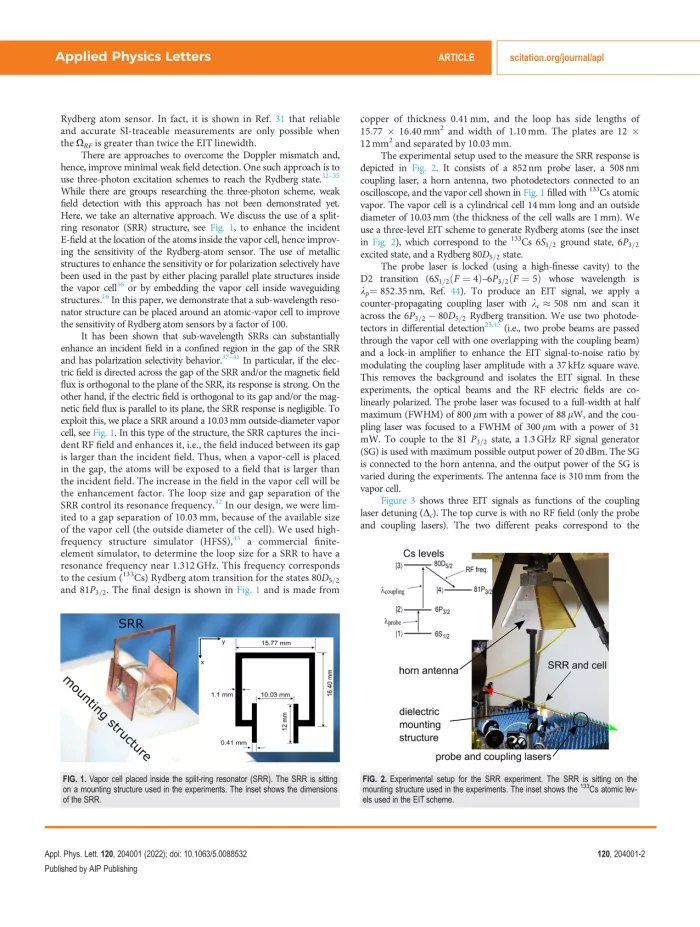
Research Report (from NIST / PDF)
Based on the previously demonstrated atom based RF receiver, the NIST team called it "metamaterial inspired structure". It can be seen that compared with traditional radio receivers, atomic sensors can be made smaller in size, work better in noisy environment, supplemented by other potential advantages.
The steam chamber used in the new study is about 14 mm (0.55 inch) long and 10 mm (0.39 inch) in diameter, which is the same size as human nails or computer chips, but slightly thicker. In addition, the side of the overhead ring of the resonator is about 16 mm (0.63 inch) and the side of the earmuff is about 12 mm (0.47 inch).
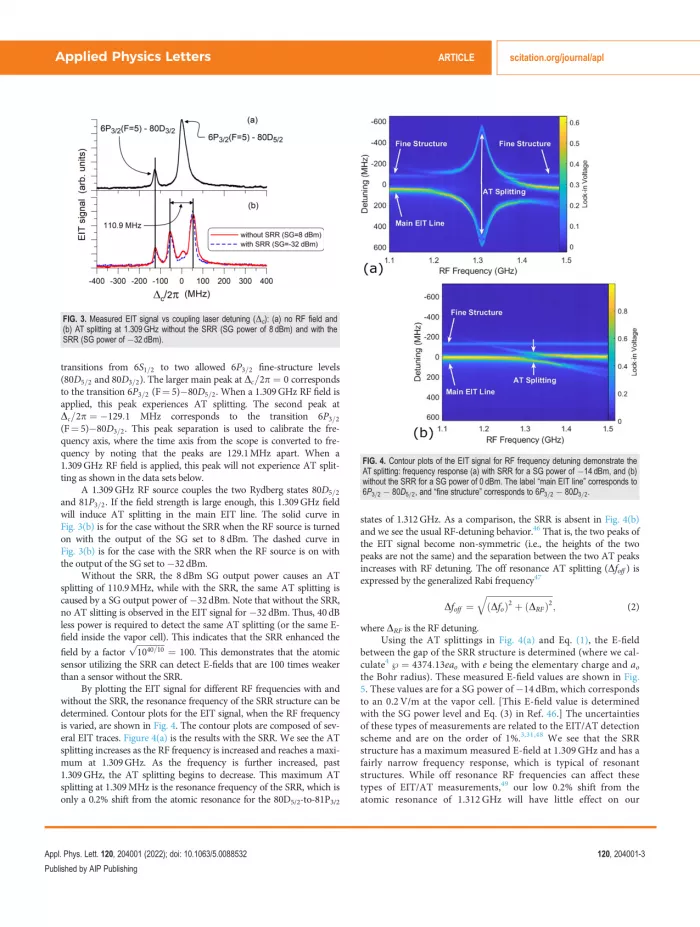
As for its principle, NIST explained that the new RF receiver depends on the special state of atoms. The researchers used two different colored lasers to push the atoms in the steam battery to the Rydberg high-energy state.
This state has new characteristics such as extremely sensitive to electromagnetic field, and the frequency and intensity of the applied electric field will affect the absorption of light (color) by atoms, which means that we can connect the signal intensity with the accurate measurement of light frequency.
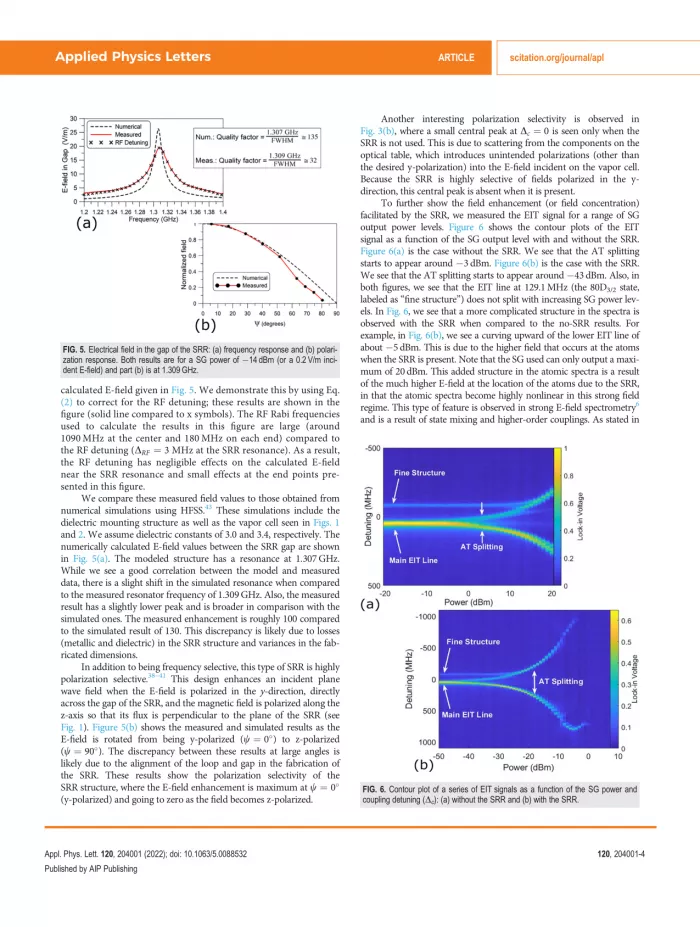
The radio signal applied to the new resonator will generate current in the overhead circuit, resulting in magnetic flux (or voltage). The size of the copper structure is smaller than the wavelength of the radio signal, so the small physical gap between the metal plates can store energy around the atoms and enhance the radio signal.
In other words, the scheme can improve the efficiency, or the sensitivity of measurement. "The loop captures the incoming magnetic field and generates a voltage in the gap. In addition, due to the small spacing, it can generate a considerable electromagnetic field in the gap," Holloway added.
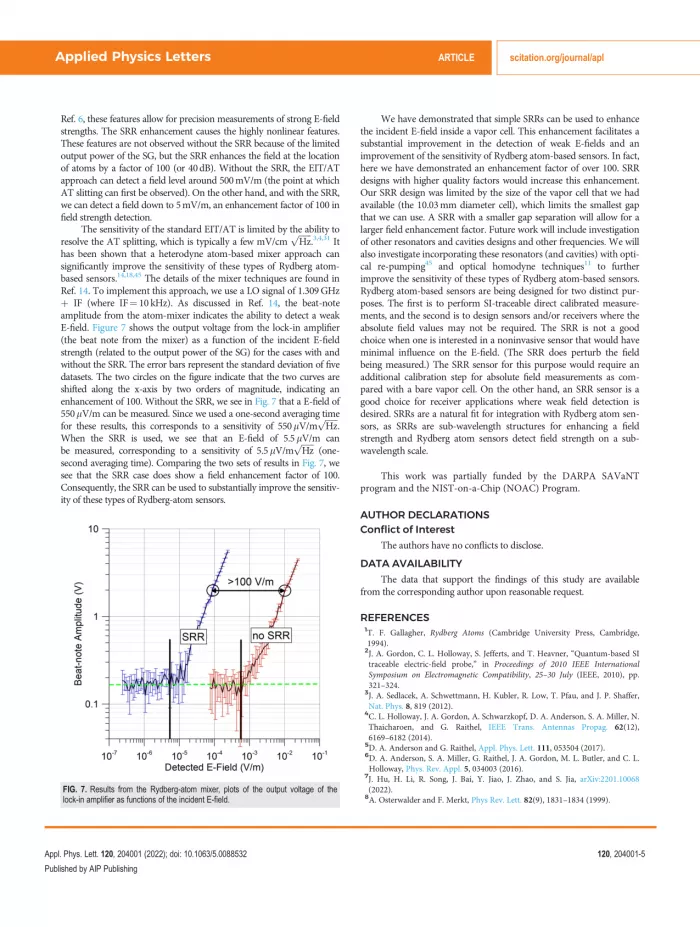
The size of the loop and gap determines the natural / resonant frequency of the copper structure.
In NIST experiments, the gap was only slightly more than 10 mm due to the limitation of the available outer diameter of the steam chamber. However, with the help of commercial mathematical simulators, researchers were able to accurately create the loop size required for a resonant frequency close to 1.312 GHz to take advantage of the energy level characteristics of the "Rydberg atom".
Finally, with the help of several external partners, the NIST team successfully simulated the resonator design. Modeling shows that the signal strength can be increased by 130 times, while the measurement result is about 100 times - presumably caused by energy loss and structural defects.
In addition, a smaller gap will produce greater amplification, and the researchers plan to apply the idea to other resonator designs, as well as smaller steam chambers and different frequencies.
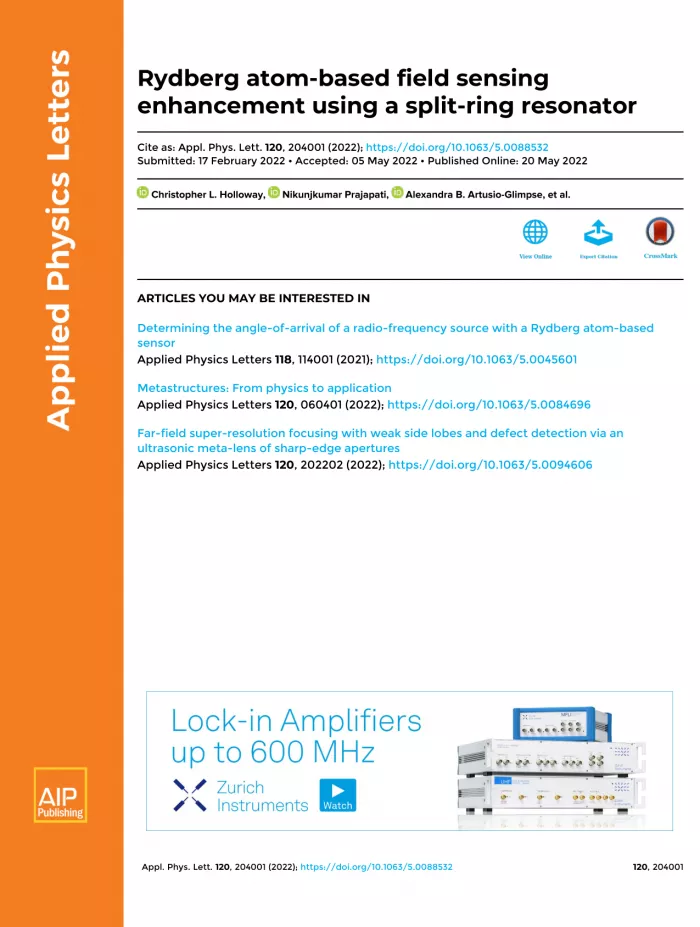
Through further development, atom based receiver can bring many benefits compared with traditional RF technology. If atoms can be used as antennas, they can eliminate the design of traditional electronic devices to convert signals into different frequencies for transmission - because atoms will do this automatically.
In addition, the physical size of the atomic receiver can be made smaller, even up to microns( μ m) Moreover, atom based systems may not be vulnerable to certain types of interference and noise.